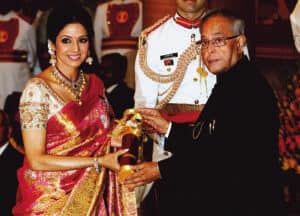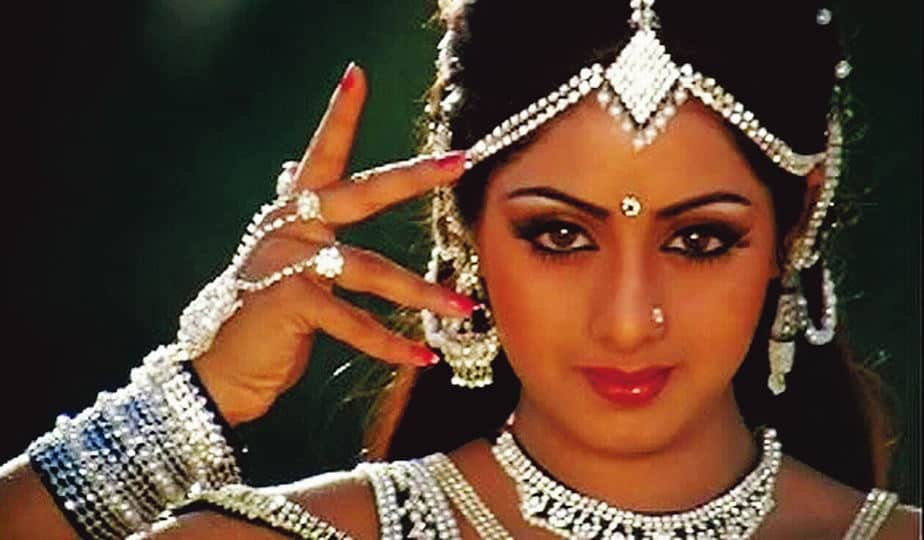She glittered in an age of VCPs and roadside video parlours, dimmed with the advent of cable TV and faded away as the internet spread
In mid-September of 1989, a popular video cassette player (VCP) renting outlet in the sleepy district town of Khagaria in north Bihar had put up a small board at the counter of the store. The board said: Chandni ka cassette nahin hai, ek tha, waapsi ki pratiksha hai (Chandni‘s cassette isn’t available. There was one, waiting for its return).
Unlike video cassettes, in small towns, new releases reached movie theatres late by a few weeks, as they do now too. On repeated enquiries, the owner revealed that an officer in the district administration, who was enamoured by Sridevi’s dances in the film, had been watching the film every evening. The officer hadn’t returned the video cassette of the latest release, which the video library had procured from the state capital, Patna.
The film had come at the end of a decade which had seen the VCP revolution, apart from countrywide expansion of the Doordarshan network. They had jointly altered film viewership in the country as, along with video libraries, video theatres and video bus coaches proliferated.
It was also a decade in which family viewership was opting out of movie theatres because of formulaic, and often violent, revenge plots which had become the default narrative in mainstream Hindi cinema. Sridevi (1963-2018) survived it all and actually defied it to become Hindi cinema’s success story of the decade.

In that defiance lies her triumph as Bollywood’s biggest crowd-puller of the 80s.
Amid an assembly line of blood-thirsty and gun-toting male star cast, she often commanded her own ground to tower over the rest as a repository of mischievous sensuality, masala acting artistry and sublime dancing prowess.
Three years before her “mere haathon mein nau nau chudiyan hain” in Yash Chopra’s Chandni became the wedding anthem for brides in the Hindi-speaking parts of the country, she had sealed her superstardom with her serpentine moves in Nagin (1986).
The hysterical nagin dance of drunk and even sober men in marriages is testimony to the cult following of the “main teri dushman” dance number.
In many ways, Nagin was a coming of age for Sridevi. It positioned her in a space where she could have films written for her as she extricated herself from the oomph-oozing eye candy slot in kitschy remakes of southern hits like Himmatwala, Justice Chaudhary and Mawali (1983), followed by Tohfa (1984) the next year. All these had her paired with a pedestrian Jitendra in the male lead while the last had her sharing screen space with her more conventionally beautiful, though far less talented, southern rival Jaya Prada.
1983, however, wasn’t all about Sridevi’s “thunder thighs”. It was also a year in which Sridevi won critical acclaim for her role in Balu Mahendra’s Sadma, a remake of his Tamil film which also had the lead pair of Kamal Haasan and Sridevi.
For an actress who had successfully straddled the four worlds of south Indian cinema – Tamil, Telugu, Malayalam and Kannada – it was apt that her calibre as an actress was showcased to the Hindi world through the lens of a Tamil director.
Her voice and language didn’t make her transition to Hindi films a seamless one, a handicap that a section of critics pointed out till her last film. However, starting as a child artist at the age of four made sure that she picked enough skills to compensate for that in a body of her work, which spread over five decades. Her conquest of the Hindi film industry for over a decade was essentially a win of charismatic craft over technicalities.
If Sadma had won her the critical nod and Himmatwala ensured that frontbenchers queued up for her, Chandni won her the urban aspirational audience as instantly as it endeared her to mofussil India. In blending well-heeled class sensibilities with the mass appeal of its song-and-dance melodrama, the film was signature Sridevi. It was an effort that Yash Chopra couldn’t repeat with the actress three years later in his more ambitious offering Lamhe (1991).
There could be many measures of her dominance of the Hindi silver screen in the 1980s, none more revealing than the fact that three of the biggest hits of the decade were named after female characters played by her –Nagin (1989), Chandni and Chalbaaz (1989).
In two of these films, she was supported by two leading male actors. It was a feat that her successors in the industry couldn’t emulate. For all their success at the box office, Madhuri Dixit and actresses succeeding her too can’t claim to have delivered mega hits playing the protagonist in the film. They rarely could manage bagging the pivotal roles in films, and even if they did, the films didn’t find commercial favour with the audience.
Even in the 1990s, when the Khan triumvirate had emerged in Bollywood, they had to play second fiddle in films which had Sridevi occupying the centrestage – Salman in Chandramukhi (1991) and Shah Rukh in Army (1996). Quite befittingly, her last two films, the much acclaimed English Vinglish (2012) and the lacklustre Mom (2017) revolved around her character.
Second, her fierce caution against overexposing herself to public life and non-core work also sustained her aura. In an era when expansion of mass media was offering many openings to actresses to showcase themselves in numerous events, she didn’t fall for it.
That helped the mystique around her. In this context, one may remember how her absence from Mile Sur Mera Tumhara (1988), an all-celeb assembly for a musical tribute to the diversity of Indian nationhood, became a talking point among her millions of admirers.
Though ever a glamourous poster girl of the industry who could carry a sari with same panache as she did a bikini, it was in a way appropriate that her appeal waned in the 1990s before succumbing to new demands. It could be seen that she wasn’t a type who could agree to lend her sensuality to double-meaning raunchy songs which flooded the Hindi screen, and were later institutionalised as item songs. She had her share of sensuous songs – from Inquilab (1984) to Mr India (1987) – but wasn’t the type who would let risque lyrics take precedence over her own charm.
In fact, her most talked about film from the 1990s was Raj Kanwar’s Judaai (1997). Though a mainstream offering, it was one of her rare efforts to explore the grey areas of a housewife who was ready to have a convenient quid pro quo to satisfy consumerist urges. In parallel cinema, the same year this theme was differently handled in Basu Bhattacharya’s Aastha. Both films were Hindi cinema’s early portrayals of dealing with consumerist anxieties that came with the initial phase of a liberalised economy.
Sridevi glittered in an age of VCPs and roadside video parlours, dimmed with the advent of cable TV channels and slowly faded away as the internet spread. She gave fleeting flickers of late. As 24-hour television and then social media demanded our stars act like you and me, she was obviously a misfit. She was from an era when stars didn’t have to be like you and me.
Yet, when you celebrate the viral star on the internet in a winking Priya Prakash Varrier, spare a thought for the original wink queen who grooved to “Ek Aankh Maaru To” almost four decades ago. She wasn’t a viral concept, she was something beyond it. Her appeal lay in invoking awe, not being shared.





